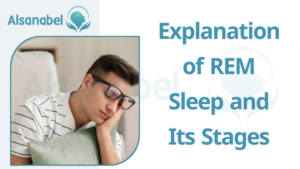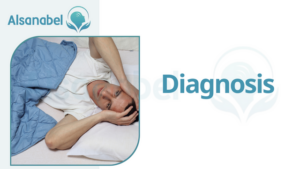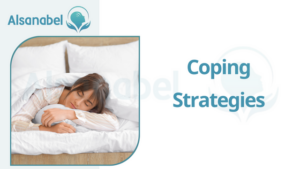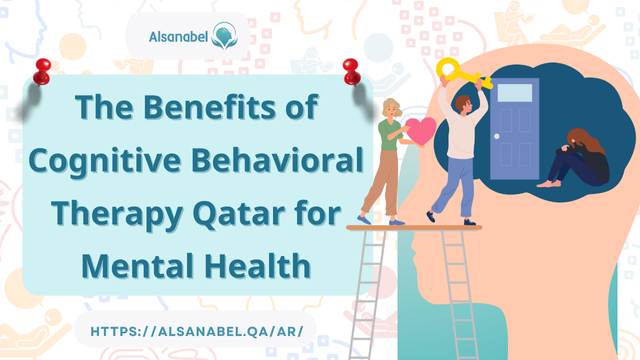Understanding REM Sleep Behavior Disorder 2024
- Category Best psychiatrist in Qatar
REM Sleep Behavior Disorder is a sleep disorder that affects a person’s behavior during the rapid eye movement (REM) stage of sleep. Normally, during REM sleep, our bodies are temporarily paralyzed to prevent us from acting out our dreams. However, individuals with REM Sleep Behavior Disorder do not experience this paralysis and may physically act out their dreams, often disruptive and sometimes violent in nature.
REM Sleep Behavior Disorder
REM Sleep Behavior Disorder (RBD) is a parasomnia that occurs when the normal muscle atonia, or temporary paralysis, during REM sleep is absent. This results in the individual physically acting out their dreams, often in a vivid, violent, or aggressive manner. RBD can cause a range of behaviors, including shouting, punching, kicking, or even jumping out of bed. These actions can potentially harm both the individual and their sleeping partners.
The exact cause of RBD is not fully understood, but it has been linked to certain neurological conditions, such as Parkinson’s disease. It predominantly affects middle-aged and older adults, especially men. RBD episodes can occur sporadically or frequently, and they can last from a few seconds to several minutes.
Significance and impact of REM Sleep Behavior Disorder
RBD can have significant consequences on an individual’s quality of life and overall well-being. The disruptive and often violent nature of RBD episodes can lead to injuries, disrupted sleep patterns, and emotional distress for both the individual and their sleep partners. It can also cause daytime sleepiness, fatigue, and difficulties in personal and professional relationships.
It is crucial to diagnose and manage REM Sleep Behavior Disorder to ensure the safety and well-being of those affected. Diagnosis typically involves a thorough evaluation of sleep patterns and behaviors, and in some cases, a sleep study may be conducted to monitor brain activity during sleep. Treatment options may include medications to reduce symptoms and improve sleep, as well as implementing safety measures in the sleeping environment to prevent injury during RBD episodes.
Explanation of REM Sleep and Its Stages
REM (Rapid Eye Movement) sleep is a crucial stage of the sleep cycle characterized by rapid eye movement, vivid dreaming, and increased brain activity. It is one of the four main stages of sleep, along with non-REM stages 1, 2, and 3. During the night, individuals cycle through these stages multiple times, with REM Sleep Behavior Disorder occurring approximately every 90 minutes.

During REM sleep, the brain becomes highly active, resembling the wakeful state. This is when most dreaming occurs. The body’s muscles, with the exception of the respiratory muscles and the eyes, are effectively paralyzed during REM sleep, a condition known as muscle atonia. This paralysis is a protective mechanism that prevents individuals from acting out their dreams, ensuring their safety and preventing injuries.
Normal characteristics of REM sleep
REm sleep is characterized by several distinct physiological and neurological features. These include rapid eye movements, hence the name, as well as increased brain activity, heart rate, and blood pressure. The brain exhibits patterns similar to those during wakefulness, and the body’s core temperature rises slightly. It is also common for males to experience erections during REM sleep.
The length of REM sleep periods tends to increase as the night progresses. Initially, REM sleep episodes may last for about 10 minutes, but they can extend to 1 hour or longer in the later part of the sleep cycle. Most dreaming occurs during REM sleep, and these dreams are often vivid, emotionally intense, and have complex storylines.
Understanding the characteristics of REM sleep is important in identifying abnormalities, such as REM Sleep Behavior Disorder (RBD). When the normal muscle atonia during REM sleep is absent, individuals with RBD may physically act out their dreams, leading to disruptive and potentially harmful behaviors. Proper diagnosis and management of RBD from best psychiatrist in Qatar are essential to ensure the safety and well-being of those affected by this sleep disorder.
Symptoms of REM Sleep Behavior Disorder
Individuals with REM Sleep Behavior Disorder (RBD) experience a disruption in the normal muscle atonia during REM sleep, which leads to physically acting out their dreams. This can result in a range of symptoms that can be alarming and disruptive to both the individual and their sleep partner.
One of the most common symptoms of RBD is dream enactment behavior, where individuals physically engage in the actions and movements related to their dreams. This can include punching, kicking, flailing, or even jumping out of bed. Often, the movements are forceful and purposeful, leading to potential injuries to themselves or their sleep partner.
Another symptom of RBD is vocalization during sleep. Individuals with RBD may shout, scream, or speak in their sleep, often in response to the content of their dreams. This can be unsettling for anyone sharing the same sleeping space.
It is important to note that RBD usually occurs in the second half of the night during REM sleep, and those affected may have clear recall of their dreams and the accompanying behaviors.
Difference between REM Sleep Behavior Disorder and usual dreaming
While dreaming is a normal and essential part of the sleep cycle, REM Sleep Behavior Disorder (RBD) differs from usual dreaming in several key ways.
In normal dreaming, the body’s muscles are effectively paralyzed during REM sleep, ensuring that individuals do not physically act out their dreams. However, in RBD, this muscle atonia is absent, resulting in the physical manifestation of dream content.
RBD episodes are often intense and reactive, characterized by complex and vivid dream scenarios. This is in contrast to typical dreaming, where dreams may vary in intensity and clarity.
Furthermore, RBD episodes are accompanied by forceful and purposeful movements, which may cause harm or injury to oneself or others. In contrast, in usual dreaming, movements are minimal or non-existent.
It is crucial to differentiate RBD from usual dreaming to ensure proper diagnosis and management. If symptoms of physically acting out dreams are present, it is essential to seek medical advice from mental hospital in Qatar to rule out other potential underlying causes and to develop an appropriate treatment plan tailored to the individual’s needs.
Causes and Risk Factors
The exact cause of REM Sleep Behavior Disorder (RBD) is not fully understood, but researchers believe that it may be associated with abnormalities in the brain structures that regulate sleep and arousal. These abnormalities can disrupt the normal muscle atonia during REM sleep, leading to the physical acting out of dreams.
One potential cause of RBD is neurodegenerative diseases. Studies have shown a strong association between RBD and conditions such as Parkinson’s disease, multiple system atrophy, and dementia with Lewy bodies. These diseases can lead to damage in the areas of the brain responsible for regulating REM sleep, leading to the development of RBD.
Additionally, certain medications and substances have been linked to RBD. Drugs that affect the brain’s neurotransmitters, such as antidepressants and antipsychotics, have been found to increase the risk of developing RBD. Withdrawal from medications or substances like alcohol and sedatives can also trigger RBD symptoms.
Factors that increase the risk of developing REM Sleep Behavior Disorder
Several factors can increase the risk of developing REM Sleep Behavior Disorder:
- Age: RBD tends to occur more frequently in older individuals, with the average age of onset being around 60 years old. However, it can also affect younger individuals.
- Gender: Men are more commonly affected by RBD compared to women.
- Family history: RBD has been found to have a genetic component, with it sometimes running in families.
- Neurodegenerative diseases: As mentioned earlier, individuals with conditions such as Parkinson’s disease or dementia with Lewy bodies have a higher risk of developing RBD.
- Sleep disorders: Having other sleep disorders, such as narcolepsy or sleep apnea, can increase the likelihood of experiencing RBD.
It is important to note that not everyone who experiences REM Sleep Behavior Disorder will develop neurodegenerative diseases. However, it is crucial to have a thorough evaluation to rule out any underlying conditions and to manage the symptoms effectively.
If you or someone you know is experiencing symptoms of RBD, it is recommended to consult a psychiatrist in Qatar for a proper diagnosis and appropriate treatment options.
Diagnosis
To diagnose REM Sleep Behavior Disorder (RBD), healthcare professionals rely on several methods and tools to assess the symptoms and identify any underlying causes. These include:

- Medical History: The doctor will gather information about the individual’s sleep patterns, behaviors, and any episodes of acting out dreams. They will also inquire about any underlying medical conditions, medications, or substances that could be contributing to the symptoms.
- Sleep Diary: Keeping a sleep diary can provide valuable insights into the person’s sleep habits, including the frequency and duration of episodes, potential triggers, and any other relevant information that can aid in the diagnosis.
- Polysomnography (PSG): This overnight sleep study involves monitoring various physiological parameters during sleep, such as brain waves, eye movements, muscle activity, and heart rate. PSG helps determine the presence of abnormal muscle activity during REM sleep, which is characteristic of RBD.
- Video Polysomnography: In some cases, video recording may be used in conjunction with PSG to capture and analyze the individual’s behaviors during sleep, providing additional evidence to support the diagnosis.
Importance of Seeking Medical Evaluation
If you or someone you know is experiencing symptoms of RBD, it is crucial to seek medical evaluation for several reasons:
- Accurate Diagnosis: Only a healthcare professional can provide a definitive diagnosis. Differentiating RBD from other sleep disorders or mimicking conditions is essential for appropriate treatment and management.
- Identifying Underlying Conditions: RBD can sometimes be a precursor or a symptom of neurodegenerative diseases, such as Parkinson’s disease or dementia. Early diagnosis and intervention are vital for managing these conditions and improving outcomes.
- Treatment Options: A healthcare professional can recommend various treatment options, including medication, lifestyle modifications, and sleep hygiene practices. They can also address any co-existing sleep disorders that may be contributing to RBD symptoms.
- Monitoring and Support: Regular follow-up visits can help monitor the progression of RBD and provide ongoing support and guidance to manage symptoms effectively. They can also address any concerns or side effects of the prescribed medications.
Remember, self-diagnosis and self-medication are not recommended. If you suspect RBD or have concerns about your sleep behaviors, consult a healthcare professional for a thorough evaluation and guidance on the appropriate course of action. Seeking prompt medical attention from Qatar mental hospital can offer peace of mind and pave the way for better sleep health.
Treatment Options
When it comes to managing REM Sleep Behavior Disorder (RBD), there are several treatment options available. The goal of treatment is to reduce or eliminate the disruptive behaviors during sleep and ensure the safety of both the individual experiencing RBD and their sleep partner. Here is an overview of the treatment options available:
- Medications: Certain medications, such as clonazepam and melatonin, have been found to be effective in reducing RBD symptoms. These medications can help suppress muscle activity during REM sleep and decrease episodes of acting out dreams. However, it is important to note that medication should be prescribed and monitored by a healthcare professional.
- Lifestyle modifications: Making certain changes to your lifestyle can also help manage RBD symptoms. This may include avoiding alcohol and substances that can worsen symptoms, maintaining a regular sleep schedule, creating a calm and comfortable sleep environment, and implementing relaxation techniques before bedtime.
- Safety precautions: Since individuals with RBD often exhibit violent movements during sleep, it is crucial to take adequate safety precautions. This may involve removing sharp objects, securing furniture, and using protective padding on the bed to prevent injuries during episodes of acting out dreams.
- Psychological interventions: In some cases, psychological interventions, such as cognitive-behavioral therapy (CBT), may be beneficial. CBT can help individuals understand and manage their behaviors during sleep, reduce anxiety, and improve overall sleep quality.
Medications and therapies commonly used to manage symptoms
- Clonazepam: This medication belongs to a class of drugs known as benzodiazepines and is commonly used to treat RBD. It helps reduce muscle activity during REM sleep, leading to a decrease in disruptive behaviors.
- Melatonin: Melatonin is a hormone naturally produced by the body that regulates the sleep-wake cycle. Taking melatonin supplements before bedtime can help improve sleep quality and reduce RBD symptoms.
- Cognitive-behavioral therapy: CBT can be beneficial in managing RBD by addressing any underlying psychological factors contributing to the disorder. It helps individuals develop coping strategies, regulate emotions, and modify disruptive sleep behaviors.
- Supportive therapy: Supportive therapy involves regular follow-up visits with a healthcare professional to monitor the progression of RBD, adjust medication dosages if needed, and provide ongoing support and guidance.
It is important to consult a healthcare professional for a thorough evaluation and guidance on the appropriate treatment options for RBD. Every individual is unique, and the treatment plan may vary based on the severity of symptoms and individual circumstances. Remember, seeking prompt medical attention from psychiatrist in Qatar and adhering to the prescribed treatment can greatly improve sleep quality and overall well-being for individuals with RBD.
Lifestyle Modifications
Living with REM Sleep Behavior Disorder (RBD) can be challenging, as the disruptive behaviors during sleep can significantly impact sleep quality and overall well-being. However, there are certain lifestyle modifications that individuals with RBD can make to help manage their symptoms and improve sleep. Here are some tips to consider:
- Avoid triggers: Identify and avoid any substances or activities that may worsen RBD symptoms. This may include alcohol, caffeine, nicotine, and certain medications that can interfere with sleep.
- Maintain a regular sleep schedule: Establishing a consistent sleep routine can help regulate the sleep-wake cycle and improve sleep quality. Set a specific bedtime and wake-up time and stick to it, even on weekends.
- Create a calm sleep environment: Transform your bedroom into a peaceful oasis conducive to sleep. Keep the room dark, quiet, and at a comfortable temperature. Use blackout curtains, earplugs, or a white noise machine if necessary.
- Implement relaxation techniques: Engage in relaxing activities before bedtime to prepare your mind and body for sleep. This may include practicing deep breathing exercises, meditation, or gentle stretching.
- Reduce stress: Stress can exacerbate RBD symptoms. Find healthy ways to manage stress, such as engaging in regular physical activity, practicing mindfulness, or seeking support from loved ones or a therapist.
- Exercise regularly: Regular exercise can improve overall sleep quality and help regulate the sleep-wake cycle. Aim for at least 30 minutes of moderate-intensity exercise most days of the week.
- Limit daytime napping: If you have difficulty sleeping at night due to RBD, try to limit daytime napping to maintain a stronger drive for sleep during the night.
Importance of maintaining a sleep-friendly environment
Creating a sleep-friendly environment is crucial for individuals with REM Sleep Behavior Disorder (RBD) to promote restful and safe sleep. Here are some key factors to consider:
- Remove potential hazards: Clear the bedroom of any sharp objects or furniture that could potentially cause injuries during episodes of acting out dreams.
- Use protective padding: Consider using protective padding on the bed to prevent injuries during RBD episodes. This can provide a cushioning effect and reduce the risk of harm.
- Secure furniture: Take precautions to secure furniture, especially bedside tables or lamps, to prevent them from toppling over during sleep movements.
- Invest in a supportive mattress and pillows: Opt for a comfortable mattress and pillows that provide adequate support for your body. This can help alleviate any discomfort and promote better sleep quality.
- Manage temperature and lighting: Keep the bedroom at a moderate temperature and minimize exposure to bright lights, particularly before bedtime. Consider using blackout curtains or an eye mask to block out excess light.
By implementing these lifestyle modifications and creating a sleep-friendly environment, individuals with RBD can optimize their sleep quality, reduce disruptive behaviors, and improve overall well-being. It is important to consult with a best psychiatrist in Qatar for personalized advice and guidance on managing REM Sleep Behavior Disorder.
Coping Strategies
Living with REM Sleep Behavior Disorder (RBD) can be challenging, but there are several coping strategies that individuals can utilize to manage their symptoms and improve their overall well-being. Here are some effective coping strategies for managing RBD:

- Education and Understanding: Learning about RBD can help individuals better understand their condition and how it affects their sleep. This knowledge can empower them to make informed decisions and seek appropriate treatment.
- Medication: In some cases, medications may be prescribed to help manage RBD symptoms. These medications can help control muscle activity during sleep and reduce the frequency and intensity of disruptive behaviors.
- Bed Safety Measures: Implementing safety measures in the bedroom can help minimize the risk of injuries during episodes of acting out dreams. This may include removing sharp objects, securing furniture, and using protective padding on the bed.
- Relaxation Techniques: Engaging in relaxation techniques before bedtime can help calm the mind and prepare the body for sleep. Techniques such as deep breathing exercises, progressive muscle relaxation, and meditation can promote relaxation and improve sleep quality.
- Stress Management: Stress can worsen RBD symptoms, so it is important to find healthy ways to manage stress. This may include practicing mindfulness, engaging in regular exercise, and seeking support from loved ones or a therapist.
- Sleep Hygiene: Good sleep hygiene practices can greatly benefit individuals with RBD. This includes maintaining a regular sleep schedule, creating a sleep-friendly environment, limiting daytime napping, and avoiding substances or activities that can interfere with sleep.
Support Systems and Resources Available
Having a strong support system is essential for individuals living with REM Sleep Behavior Disorder. Here are some support systems and resources available for those managing RBD:
- Healthcare Professionals: Consulting with healthcare professionals, such as sleep specialists or neurologists, can provide individuals with valuable guidance, personalized treatment plans, and ongoing support.
- Support Groups: Connecting with others who have RBD can provide a sense of community and understanding. Joining support groups or online forums allows individuals to share their experiences, exchange coping strategies, and receive support from others facing similar challenges.
- Education and Awareness Organizations: There are organizations dedicated to raising awareness about sleep disorders, including RBD. These organizations provide educational resources, support networks, and advocacy for individuals with RBD and their families.
- Therapy: Seeking therapy, such as cognitive-behavioral therapy for insomnia (CBT-I), can help individuals address any underlying sleep issues and develop effective coping strategies for RBD.
- Family and Friends: The support and understanding of loved ones can make a significant difference in managing RBD. Communicating openly with family and friends about the condition can foster a supportive environment and encourage effective coping.
By implementing these coping strategies and utilizing the available support systems and resources, individuals with REM Sleep Behavior Disorder can effectively manage their symptoms and improve their quality of life. It is important to work closely with healthcare professionals to tailor a treatment plan that suits individual needs.









